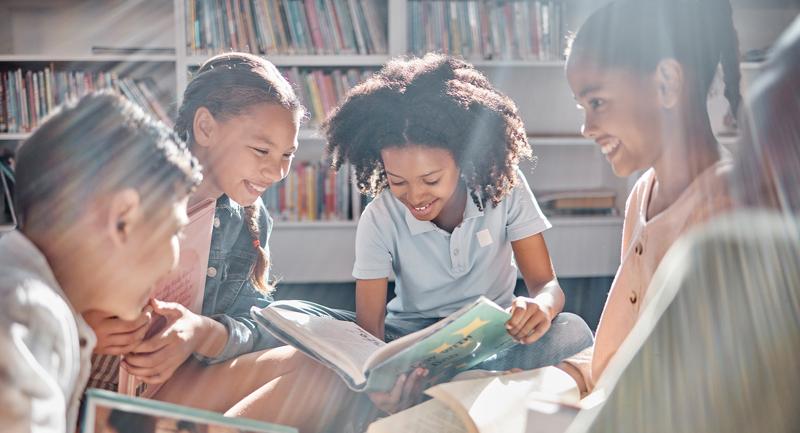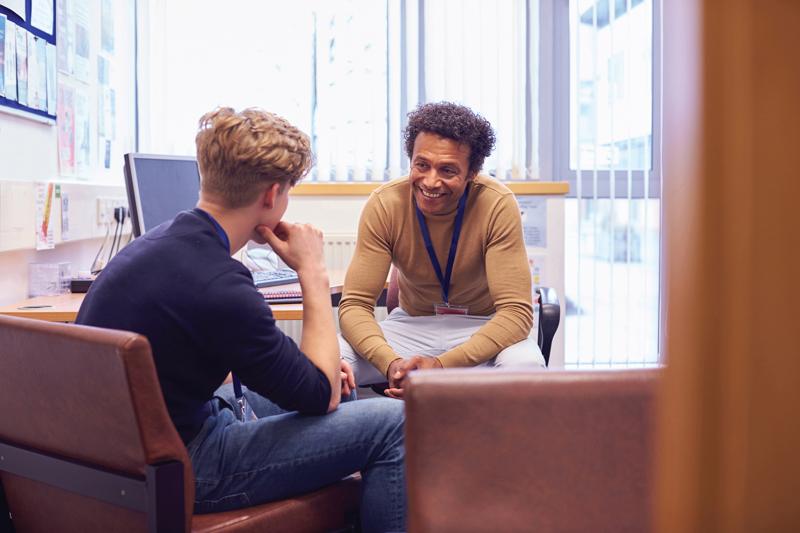Literacy expert Richard Allington suggests that "given the research evidence linking volume of reading to reading achievement and oral reading fluency it seems surprising that American commercial core reading programs only provide roughly 15 minutes of daily reading activity (Brenner & Hiebert, 2010). That means that in too many classroom children have 75 minutes daily to listen to the teacher or to complete low-level worksheets instead of actually reading."
Yikes, right? But when is independent reading supposed to happen? Teachers are always asking, "How can we fit in everything we're expected to teach and do?" It can feel like we're living in a whirlwind, with barely time to eat, let alone pause and reflect about what we're doing and why. It's as if we're getting through our days rather than thinking them through.
Even something as important as independent reading can get lost in the shuffle. (And just to be clear—the independent reading described here is in addition to children's reading during workshop, other formats, and the content areas, where student choice is often necessarily guided, depending on what children are working toward.) We hear again and again about the power of independent reading—not just the connection between reading volume and reading achievement and fluency, but also that independent reading nurtures and inspires life-long readers, writers, thinkers, and humans, and is an "essential practice, one that develops background knowledge, improves comprehension, heightens motivation, and helps students strengthen their vocabulary" (Miller and Moss, p.11).
So why isn't everybody doing it? Why don't all children have the opportunity to read books they've chosen every single day? The reasons vary, but the one I hear most often from teachers goes something like this: "I'd really love to, but I don't have an extra twenty or thirty minutes anywhere in my day."
But if we'd really love to, we would, right? Not necessarily. Sometimes we get lost in the shuffle, too We just need a little nudge—a kind of wake-up call—to set things right. And a gentle reminder that when we pair independent reading with student choice, we're giving students the most important gift we can give.
So, I'm happy to nudge and remind! If free-choice independent reading isn't happening in your classroom or school because of time, and you'd like it to, here are three easy steps you can take today to get books in the hands of kids right away:
1. Find the Minutes
You can find them by making a list of everything children do from the first bell to the last. Calculate the number of minutes each entry on your list takes—you might even spend a day doing a little clock-watching, just to make sure you find every single one. (Minutes can be sneaky.) Let nothing pass you by—be particularly aware of the number of minutes children spend on things like morning work, test-prep packets, worksheets, calendar activities, listening (rather than doing), and convoluted and time-consuming routines. Now is the time to be honest and bold: Ask yourself, "Is the time children spend on some of the practices and activities I've listed more important than giving them time to read?" If you're even thinking about answering no, cross them off your list and let them go. Now, add up the minutes you've found and decide where best to place them—will children get to read the first twenty or so minutes of the day? The last? Somewhere in between? The when doesn't really matter—any time is a good time for independent reading!
2. Think About Texts
Now that you've found the minutes, think about books—what will children read during this time? If you have a classroom library in place, you're all set. If not, don't let that stop you! Gather as many books as you can from your school and local libraries and start with these. Let children help you organize them in tubs or baskets in ways that provide for easy access. As you build your classroom library, ensure that children can choose from a wide range of interesting texts that affirm their lives and experiences, as well as the lives and experiences of others (Chad Everett, 2017).
3. Make the Pitch
Finally, explain to children why independent reading is important and how it will look. Keep it simple! Don't impose a lot of rules—kids need to choose a book they want to read, find a spot that feels right to them, and then settle in and read. (No level restrictions, reading logs, written responses, or end-of-book requirements needed.) What will you be doing during this time? You'll have the pleasure of having conversations with your students! You'll talk together about books and big ideas, learning about them as readers and people, and they'll be learning about you, and each other too!
Self-Discovery Through Reading
Don't forget that the goals for independent reading aren't as much about children's performance as they are about student identity. When students don't have independent reading time, they miss out on discovering themselves as readers.
Commit to six weeks of independent reading. Talk with kids. Listen, really listen, to what students have to say. Notice the books they choose. Take notes. Reflect. What are you learning about your students (individually and collectively) that you didn't know before? What, or who, surprised you? Where will you go from here?
Have these kinds of conversations with your students too. Ask: what are you learning about yourselves as readers? What kinds of books do you love? Have any of the books you've read so far changed the way you think about the world and your place in it?
The way you find out about the power of independent reading is to do it. Trust yourselves. Trust children. Trust books. Once you do, you'll never go back. And your kids will be forever grateful.







